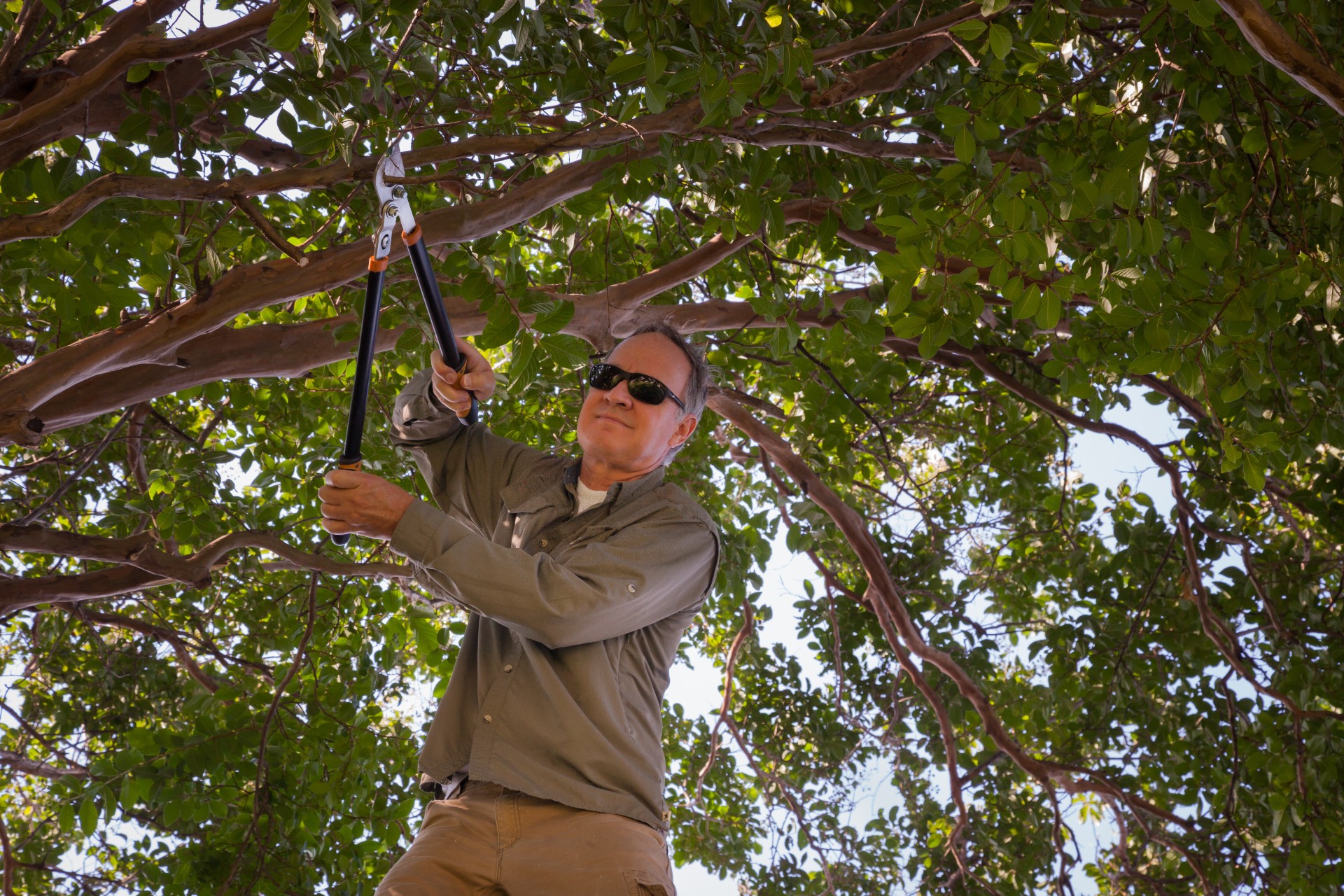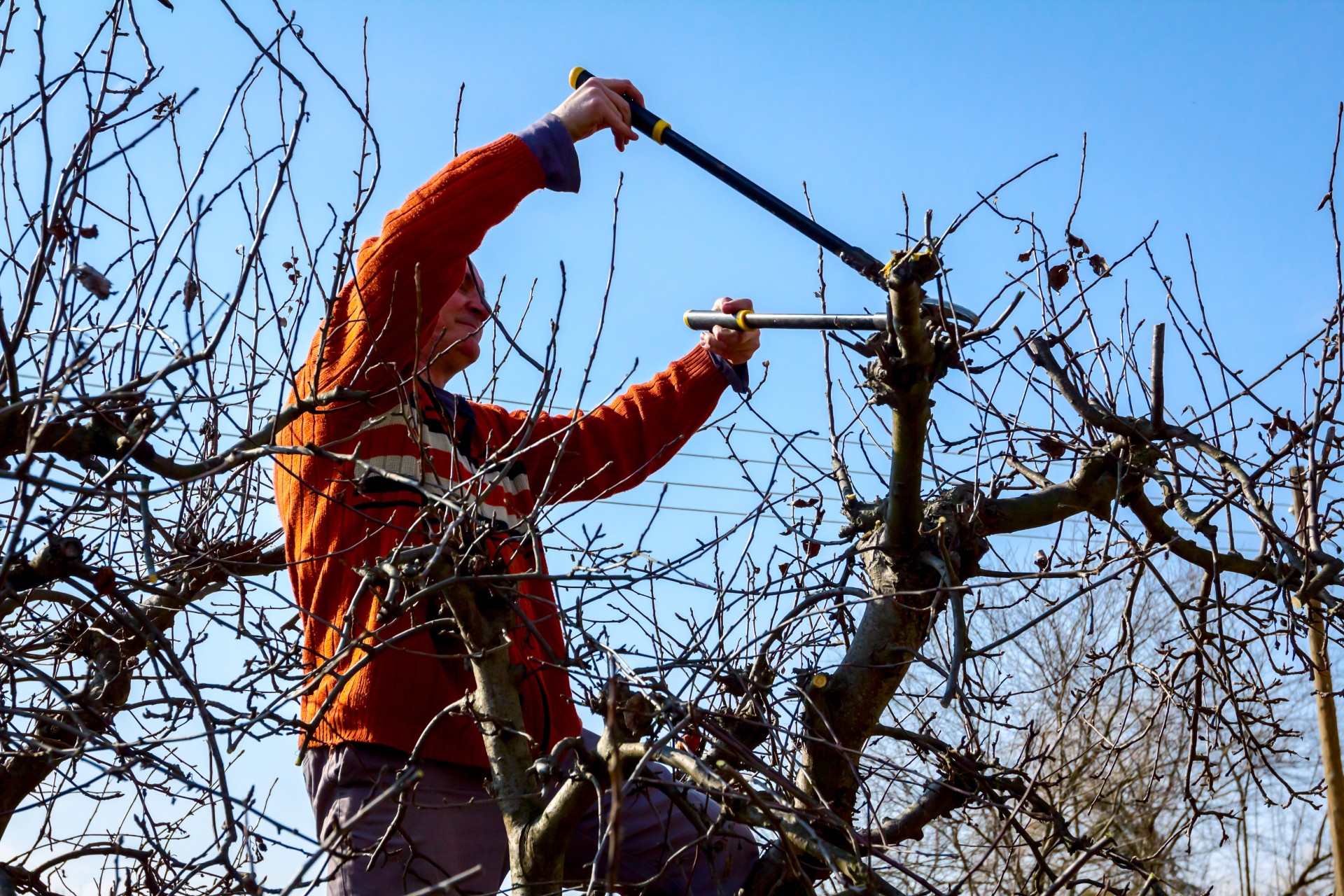Maintaining the trees around your yard and home will ensure they are look good and remain healthy. There are two key methods used to maintain a tree: Pruning and trimming. It’s helpful to know when it’s best to trim a tree, when it’s best to prune a tree, and how to do both. For all the tips and tricks you need regarding tree trimming and pruning, check out these ideas that will get you on the right track to having a beautiful yard.

What is the difference between pruning and trimming a tree?
The ultimate showdown of pruning versus trimming is a lot more subtle than you might think. Both involve cutting down branches with clippers or saws, and both are used to ensure the health of the shrub or tree. Although they seem a lot more alike than different at first glance, the small subtleties are what differentiate the two:
- Pruning. Pruning is most commonly used for maintaining trees. The purpose of pruning is to remove any dead or loose branches from the tree to prevent damage to neighboring plants or passersby. When you remove dead or loose branches, you are also providing more light and space for new and existing branches to grow and develop. Fruit-bearing trees also benefit from more space and light for fruit to grow and flourish. Pruning can also be used for aesthetic reasons. Certain branches and leaves are cut to create a particular shape.
When done correctly, pruning should be able to maintain a specific shape for a long period of time before another pruning session is needed.
- Trimming. Tree trimming is a more aesthetically focused process. It is used to clean up the edges around a tree. Small branches and leaves are cut from the tree to keep it looking clean. Often, unsightly green shoots are removed for an overall better design. Trimming is done more frequently.
What is the purpose of pruning a tree?
The main reason to prune a tree is to control how it grows. Certain tools and methods are used to maintain the growth pattern of a tree. This can be beneficial for those who are trying to create a specific shape, keep the growth away from power lines and other structures, or just keep the tree a smaller size.
Beyond controlling how a tree grows, pruning is also used to carefully remove dead or loose branches in order to keep the landscape and people around the tree safe.
When should trees be pruned?
The best time to prune or trim a tree is between fall and early spring. It is important to get the pruning done before blooms start to occur in the springtime. Certain trees have certain pruning periods, but most trees need to be pruned every three to five years for the best results. To find out how often you should prune your specific type of tree, you can research it online research or speak with a gardening professional.

How do you trim and prune a tree?
Trimming and pruning involve slightly different methods and tools, so it is important to have the right ones for each process.
When trimming one of your trees, you should follow these steps:
- Start by getting the proper equipment. Hand clippers or large pruning shears will get the job done. Ensure that your tool is sharpened and in working condition before beginning.
- Before cutting, make a plan on how you want the tree to look. You can even mark the branches with a pencil for an easy guide.
- Using your clippers, cut off the small exterior branches and leaves until the desired look is achieved.
Similar to trimming a tree, it is important to have the right equipment and methods for pruning. Some steps you can follow to prune a tree include:
- Wait until the leaves have fallen from the tree you want to prune.
- Ensure that you have sharpened pruning shears or clippers.
- Start by cleaning up any dead or loose branches by cutting away at the base of the weak branch.
- Cut off the smaller branches first, then work your way to the larger branches. You may need a hand saw for larger branches. It is best to prune only the smaller branches and never a main branch that is connected to the heartwood or center of the tree.
If you enjoy having a beautiful yard and healthy plants, then you’ve probably heard of tree trimming and pruning. Both of these tactics are necessary when it comes to tree maintenance and health. Although the differences between the two are subtle, knowing the unique qualities of each will help you achieve the perfect balance for your tree’s appearance, growth rate, and overall health.


